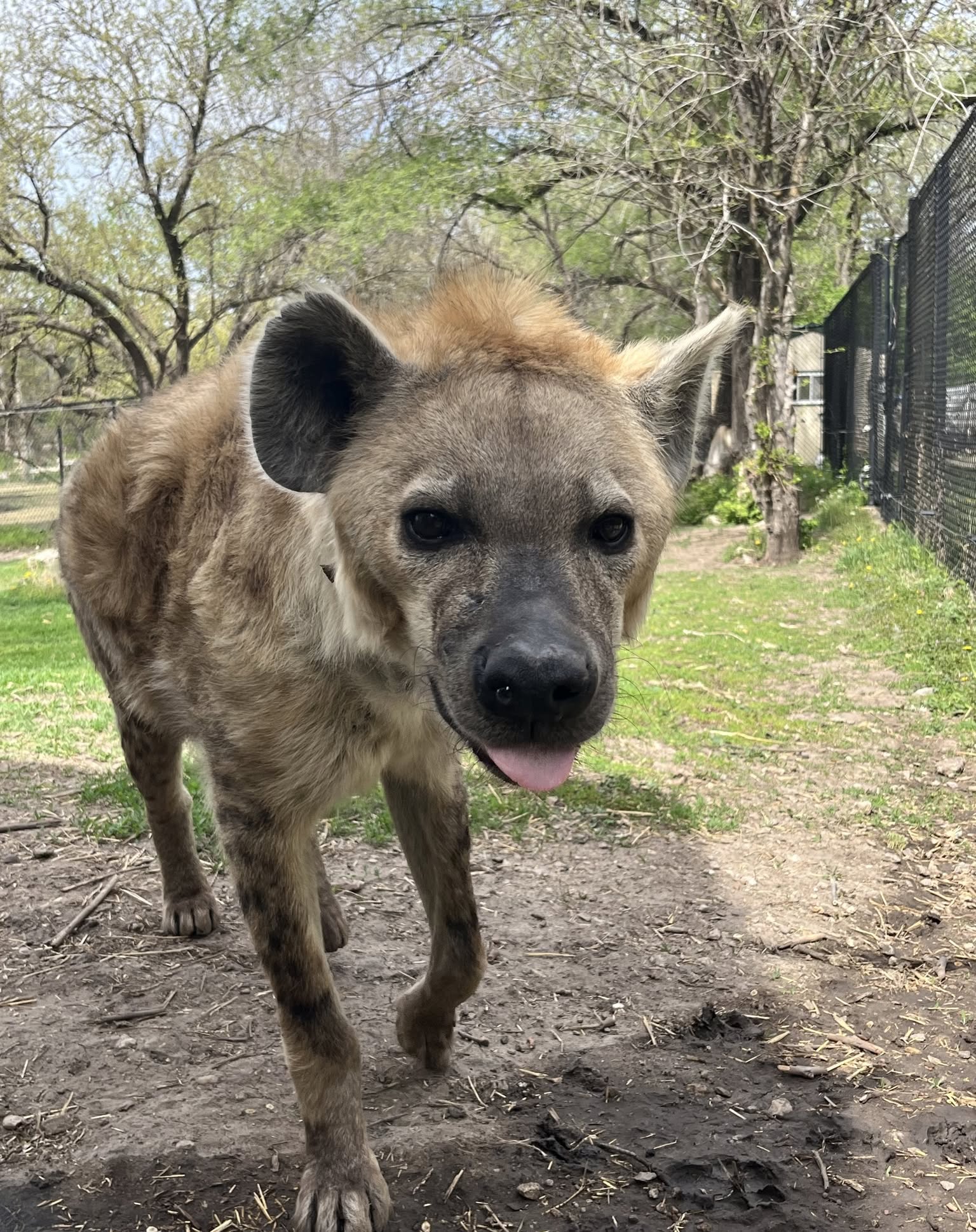- The significance of International Hyena Day in promoting awareness and appreciation for hyenas.
- An in-depth look into the behavioral traits and personalities of Nia and Kiira, the spotted hyenas.
- The matriarchal social structure of spotted hyenas and its implications.
- Unique adaptations and behaviors of spotted hyenas, including their communication and social dynamics.
- Conservation efforts and challenges faced in preserving hyena populations in the wild and in zoos.
International Hyena Day is a special occasion dedicated to celebrating and understanding one of nature’s most misunderstood creatures: the hyena. This day serves as an opportunity to shed light on the valuable role that hyenas play in the ecosystem and to dispel myths surrounding their behavior. Hyenas, especially spotted ones like Nia and Kiira, are fascinating animals with complex social structures and behaviors that intrigue scientists and animal lovers alike.
Nia and Kiira, residents at a well-known zoo, offer a glimpse into the enigmatic world of spotted hyenas. Kiira, the matriarch, is known for her easy-going nature. Unlike the strict hierarchical norms typically observed in hyena clans, Kiira enjoys sunbathing and engaging in creative activities like painting. Her preference for colors such as red and pink reveals her playful side, and she often flaunts these colors to showcase her beauty. Her favorite interaction with her keepers involves chin and neck scratches, demonstrating the trust and bond between her and her caregivers.
On the other hand, Nia is a lively male hyena who thrives on attention. Visitors often refer to him as a "pretty boy," a title he takes pride in. His enthusiasm is evident in his favorite training activity, "paw," where he eagerly participates. Nia also exhibits unique vocalizations, including a distinct "moo" that serves as his morning greeting to his keepers. Enrichment activities, including playing with water and engaging with toys like a jolly ball, are crucial for stimulating Nia’s active mind and maintaining his physical health.
Spotted hyenas are known for their matriarchal society, a structure that places females in charge of decision-making and hierarchy management. Female hyenas are generally larger and more dominant than males, leading the packs in hunting and social activities. They exhibit a fascinating social organization where communal care and cooperation are emphasized. This female-led dynamic is rare among mammals and presents a unique system for researchers to study gender roles and hierarchies in the animal kingdom.
Hyenas have evolved a variety of adaptations that enable them to survive and thrive in diverse environments. Known for their robust jaws, hyenas are adept at crushing bones to extract the marrow, an adaptation that allows them to scavenge efficiently. Contrary to their reputation as mere scavengers, hyenas are skilled hunters capable of bringing down large prey. Their hunting strategies involve exceptional teamwork and communication, facilitated by an array of vocalizations that help coordinate movements within the clan.
Communication among hyenas is a complex tapestry of sounds that convey different messages. From the infamous "laugh" that signals excitement or submission, to the whoops that can be heard across miles, hyenas use an intricate language that helps maintain social bonds and establish territories. These vocalizations are an essential aspect of hyena life, enabling them to thrive in the often harsh landscapes of Africa.
Conserving hyena populations presents unique challenges. Despite their adaptability, hyenas face threats from habitat loss, human-wildlife conflict, and misguided perceptions. Many people mistakenly view hyenas as pests or threats, leading to unnecessary killings. Conservationists work tirelessly to change these perceptions by educating the public about the ecological importance of hyenas. They play a crucial role in cleaning the environment by consuming carrion and controlling prey populations, thus maintaining a balanced ecosystem.
Zoos like the one housing Nia and Kiira are vital for conservation efforts. They provide a controlled environment where hyenas can live safely, while also serving as platforms for education and research. Observing the behaviors and social structures of captive hyenas offer insights that can be applied to wild populations. Additionally, breeding programs ensure the genetic diversity and survival of hyenas, making zoos indispensable partners in global conservation initiatives.
Visiting Nia and Kiira provides a unique opportunity to see these magnificent creatures up close. Nia often basks in the attention near the guest viewing area, while Kiira enjoys the serenity offered by the shade of trees. Their presence not only captivates visitors but also educates them on the importance of every species in our interconnected world. As we celebrate International Hyena Day, it is essential to appreciate both Nia and Kiira, and all hyenas, for their contributions to biodiversity and the lessons they offer about cooperation, leadership, and resilience.
Incorporating hyenas into broader wildlife conservation efforts requires ongoing research, public engagement, and innovative strategies to mitigate human-wildlife conflicts. By fostering a deeper understanding and appreciation for hyenas, we can better protect these remarkable animals and ensure they continue to thrive both in captivity and in the wild.
*****
Source Description
Today we celebrate our spotted hyenas, Nia and Kiira, on International Hyena Day!
Hyenas are a matriarchal species, but Kiira doesn’t always follow social rules. She’s an easy-going matriarch who loves to sunbathe and paint! Her favorite colors are red and pink, and she’ll roll around in them to show off how beautiful she is. Her favorite contact from her keepers is chin and neck scritches—a perfect way to end a training session.
Nia is a rambunctious boy who loves hearing guests call him “pretty boy.” His favorite training behavior is “paw,” and he’ll often ‘moo’ a good morning to keepers as they go by. His favorite enrichment includes running water from the hose and playing in his water trough with a jolly ball.
You can usually spot Nia throughout the day up by the guest viewing area, while Kiira prefers to lounge back by the trees. Be sure to stop by and say hello to these bone crushing babes! ❤


